Last Updated on June 11, 2023
The costumes for “Gentleman Jack” are inspiring, so much so that one of our writers intends to dress as Anne Lister for Halloween, (even though it will probably take her from now until October to figure out how to replicate Anne’s hairstyle).
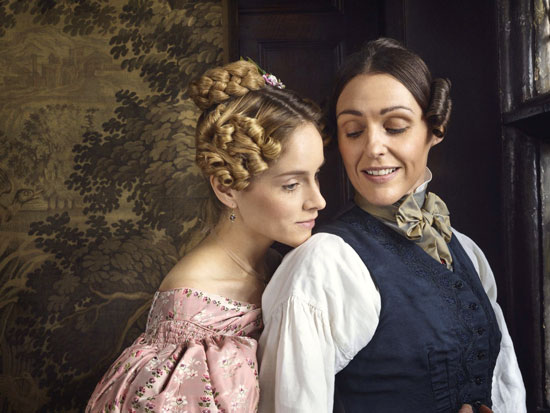
To help keep this site running: Willow and Thatch may receive a commission when you click on any of the links on our site and make a purchase after doing so.
The costuming excellence is thanks to series designer Tom Pye, who works internationally in theatre, TV, film, opera and dance. Period drama fans may have seen Pye’s costumes in “To Walk Invisible,” the 2016 BBC / PBS movie that brought the Bronte sisters to life.
Below, Pye talks with Willow and Thatch about his creative process, and the challenges and delights of manifesting his vision of Anne Lister for the new HBO series, the 1832-set drama based on the true-story and coded journals of Lister (played by Suranne Jones). “Gentleman Jack” follows her attempt to revitalize her inherited home, Shibden Hall, in part, by taking a wife.

The credit sequence is a series of cuts of Anne getting dressed. Her clothing is such a large part of her identity, so this makes sense. But was it always the plan to focus on the clothes for the opening sequence, or did it take time for everyone to settle on that idea?
Tom: It was on the cards from very early on. The first drafts I read of Sally Wainwright’s script for “Gentleman Jack” – when the title for the series was still going to be “Shibden Hall” – focused on Anne Lister’s clothing in the credits. My understanding is that Sally was inspired by the sequence in Pedro Almodavor’s film, Talk to Her, in which a female matador gets ready for a fight and the elegant and intricate details of their costume are honed in on.
We were fascinated by the balance between male and female, the ambiguities that could be explored by going into close detail, and the interesting juxtapositions that could be created between garments, such as male drawers worn over female corsetry. I was particularly keen to include details such as the corset busk with its delicate carving depicting the hall and the Lister’s latin quote. So much of what Anne wore would have been dictated by the strict social conventions of the time, such as corsetry and ankle-length skirts. I found it fascinating to imagine how she may have complied to these restrictions and how, at the same time, she might have subverted them, creating what must have appeared as a very masculine silhouette to earn her the nickname “Gentleman Jack.”
Can you walk us through these sketches, and talk about your working method?
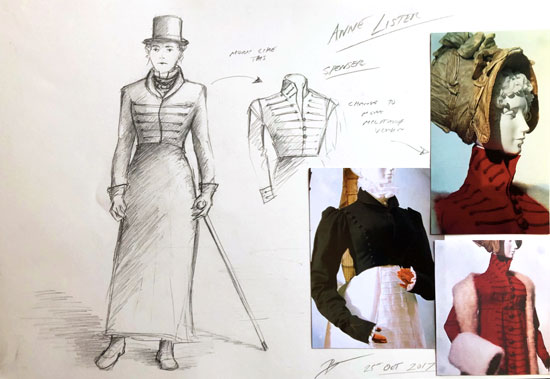
Tom: This sketch (above) shows how a design can develop. The original idea for this came straight out of Anne Lister’s diary. Rather helpfully she mentions several items of clothing in her writing, so we do know a fair amount about specific items of clothing she wore. There’s mention of a number of things including a spencer, a greatcoat, wool waistcoats, gaiters and stays. And Anne often refers to her sister Marian repairing clothes for her or buying fabric to make particular garments, such as the drawers she wore.
There’s even a packing list of the clothes she took on one of her trips to Denmark that she would have shared with her lady’s maid Eugenie, which we covered in Episode 8. You can imagine how excited I was to read about these kinds of details. I found it absolutely fascinating and hugely helpful to my design process.
So, armed with the knowledge that Anne wore a spencer, and through conversation with Sally about how we felt Anne would have enjoyed some military reference in her clothing, I set about designing a spencer jacket that could do both. The attached sketch shows my process of reflecting on references and incorporating this research in the completed design. In this case, I changed my mind about the decoration after doing the first sketch.
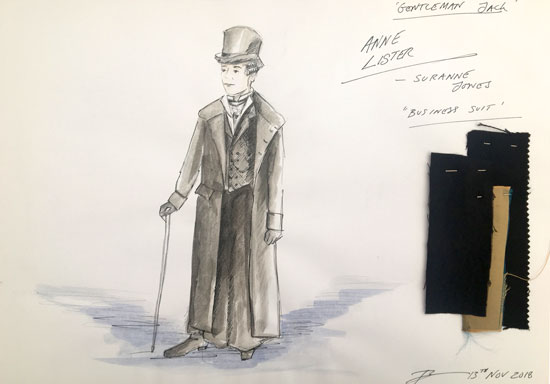
Shown in this illustration (above) is Anne’s smart great coat. She would wear this for formal meetings, such as visiting the bank in Halifax. The design is based on an original 1830s coat that’s part of the John Bright collection, which is such a wonderful resource. I was working with John’s company, Cosprop, to make most of Anne’s costumes and I was fortunate to be able to examine the original coat up close.
Closely examining original clothing is an important part of my research. By doing this I feel better able to understand construction methods and fabrics, and to gain a deeper insight into the cultural and historical contexts of the garments. As well as the John Bright collection, I also researched extensively at Bath Museum, Chertsy Museum, and Winchester City Museum. In doing so, I made appointments with the curators to gain access to see items held in their archives that aren’t usually on display. Another valuable part of my design process is analyzing the depiction of clothing in artworks, including original drawings and paintings.
For “Gentleman Jack,” I spent a great deal of time with work by artists such as Mary Ellen Best and George Scharf, as well as the fashion plates of the 19th century periodical, “La Belle Assemblée.” I also researched satirical cartoons from the period which give a wonderful perspective on how fashions were viewed at the time, socially and culturally.
Along with paying a great deal of attention to historical accuracy, I worked closely with one of the tailors at Cosprop, Dan Ashworth, to design Anne’s great coat to fit Suranne in very particular ways. I wanted its length and construction to give Suranne the ability to move easily, and it was also essential for me that the coat itself would move in an exciting way. This was achieved through the choice of fabrics and also through a specific construction that allowed the coat to billow behind as she strode about.
About historical accuracy, how much did you weigh that vs. the need to convey character to viewers in 2019? On-screen Anne wears a corset and skirts, and as far as we know, the real Anne Lister did not wear a top hat, but a top hat is such an effective way of conveying her personality and social status to a modern audience.
Tom: I love to start with historical research, but storytelling is the main focus of any design work and I think it’s essential to know a period as well as you possibly can in order to achieve this well. It seems to me that only once you’ve achieved a deep understanding of the period you’re working with can you then find ways to take liberties when needed in order to convey specific traits of character, mood, and the likes. Researching thoroughly breeds ideas and this enables details to be incorporated that wouldn’t otherwise be possible.
My research into Anne Lister told me she wore a small black soft cap, probably created with velvet. I tried a few shapes along these lines, but it didn’t seem to be able to convey an understanding to a modern audience of the power or status that could be achieved with a top hat. I also undertook extensive research into other 19th century lesbians and was particularly influenced by the Ladies of Llangollen, Eleanor Butler and Sarah Ponsonby, two upper-class Irish women whose relationship was notorious. Like Anne, they also wore all black, and they wore top hats. There’s no mention of a top hat by Anne in her diary, but that doesn’t mean she didn’t own one – we just don’t know. I worked with a fabulous milliner, Sean Barrett, to create all of Anne Lister’s hats and several bonnets for Ann Walker.
We did explore the idea of Anne wearing pants. I fitted Suranne in pantaloons, but my instinct was they were too unlikely. We know that the French novelist George Sand (who was another top hat influence) wore trousers on a couple of occasions in Paris around this time. But Paris is a very different place to Halifax, and Sand moved in artistic and bohemian circles that were unlike the society Anne mixed with. Were she alive in 1930, I barely think she’d have got away with wearing trousers in Halifax, let alone in 1830! Social conventions were just too strict.
I also feel were she to have worn pants there would have been mention of this in her diaries or other contemporaneous accounts of her appearance. And the garments that are mentioned in the diaries are quite the opposite, including petticoats, skirts, corsets, and at least one pelisse. However, I believe she toyed with breaches in her youth and we reflect this occasionally in flashbacks, using them to suggest Anne was a rather a precocious teenager.
You were the costumer for “To Walk Invisible,” the PBS historical drama that chronicles the Brontë sisters’ battle to publish their novels. Like “Gentleman Jack,” it is set in the first part of the 1800s in England, and was directed by Sally Wainwright. But “To Walk Invisible” was a TV movie, as opposed to a full limited series. Did your work as costume designer for the movie prepare you for “Gentleman Jack”?
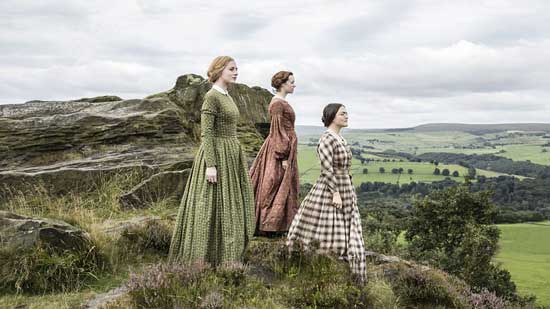
Tom: In many ways, To Walk Invisible was a perfect warm up, but by comparison to “Gentleman Jack” it was a small and contained job with my main focus being just the Bronte family. I designed nearly all of their costumes to be custom-made and the crowd scenes weren’t as large as those in “Gentleman Jack.” On both projects, I was lucky to be able to work with a brilliant costume supervisor, Nadine Davern, who was an essential collaborator. It was Nadine who assembled my team in the costume department, and each and every member was superb at their job. Having a fantastic team is essential for the department to run smoothly and be able to work effectively with the number and variety of actors we had to costume.
It’s really rewarding to see your talent manifest on-screen. Do you enjoy creating for television as much as for the stage? Is your working method very different?
Tom: It is exciting to be able to design for different mediums. Creatively, it keeps me on my toes and opens up great opportunities for ‘cross-pollination’. I often find it helpful to bring working practices from one field into another.
Recently I’ve been designing for ballet. Technically this is a very different undertaking, in that the costumes have to enable a great deal of movement for the dancers. It’s like dressing athletes. A recent production was “Anna Karenina” for the Joffrey Ballet, which involved later nineteenth century dress.
My work on this project directly informed the technical side of my design for “Gentleman Jack,” enabling me to solve a problem Suranne had with her corset. The more traditional corset Suranne wore began to give her welts when she was required to be very physical, doing things like leaping up and down from stage coaches, and jumping over walls. So, in collaboration with Parkinson Gill, my favourite costume makers for opera and dance, we used a method of replacing panels in the corset with powernet, a fabric commonly used in ballet. This completely solved the issue whilst retaining the corseted look, giving Suranne a lot more movement.
The attention to period detail extends to the costumes of all the actors, from what looks to me like a shepherd’s chemise in the first episode, to the aprons of the servants, all the different bonnets, and from the butcher to the banker, to all the choices that reflect the status of the tenants. How on earth did you manage to do that?
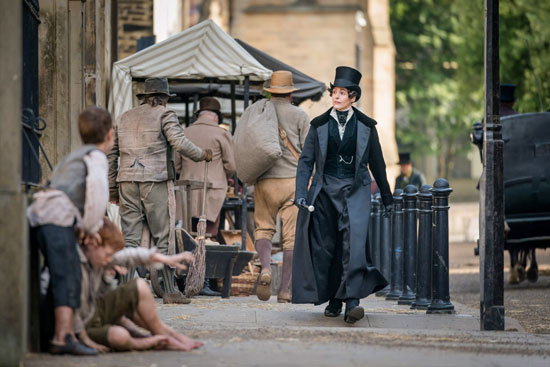
Tom: That’s nice of you to notice! I’d say that was actually one of my biggest concerns. Over the course of the series we had over 100 named characters from every possible level of society, with many varied professions and positions, from beggars to royalty. Alongside these characters we had hundreds of background artists to costume. It was essential that as new characters turned up, whether this was in the first or the last episode, we were able to convey their level of wealth and social status correctly.
In Episode 8, there were large group scenes in which many characters previously seen independently throughout the series were suddenly in the same room. Making sure they all looked appropriate together in terms of their status was a test for the whole costume team to bring together the months of work we had undertaken.
Marian, for example, was a tricky one. Although in terms of her social status as a Lister she was very high up, she had no personal income and she was not as wealthy as her sister. So, it seemed to me she ought not to be dressed in silk. Everything I designed for her was created with wool or cotton, fabrics that were much more readily available in the area and would have been a great deal cheaper. In fact, money would have been scarce for most of the characters.
I don’t think even Anne would have had an extensive wardrobe. It’s likely she would have worn the same clothes for days and days. Generally, when costuming the number of people required for “Gentleman Jack,” it’s all about teamwork. And as I mentioned earlier, I was very lucky to have a small but brilliant team to work with.
Can you talk about the use of color? Anne’s black is an obvious one, and her reason for dressing that way is given in the script, but it contrasts so well with the pastels of the innocent and sheltered Ann Walker. And Marion Lister’s dresses tend to be dark colors or busy patterns. The servants wear rich mustards and burnt umbers, looking like they were achieved with plant dyes.
Tom: As part of my design process, one of the first things I did was put a board of colour palettes together for the different groups of people, houses, and families. I had a palette for Shibden Hall with rich, dark earth tones, lots of terracotta, mustards, ochres, and some darker blues. I wanted their palette to feel almost Elizabethan to chime with the history of the house. Crow Nest was a Georgian House and so I went for a much lighter palette that was deliberately opposite to Shibden with much paler pastel shades and typical pale Georgian light greys, duck egg blues, pale yellows, and pinks.
Anne and Ann both wear rings on their index fingers. Was this an 1830s thing? It feels like a constant visual reminder of the impossibility of marriage—so close but so far.
Tom: You’re probably correct about this. The rings were a detail suggested by Sally Wainwright. I liked it and felt it was right. I felt it would read as slightly more masculine by a modern audience, than could be achieved by wearing rings on the fingers ordinarily associated with women. And it instantly worked when we tried in on Suranne. I love the way by tweaking such a simple adornment on Anne we were able to layer in further narrative about her life and personality.
What was the process of settling on Anne’s hair style? How do you represent the era and the real Anne Lister without it being distracting or looking silly? It’s such a great touch and through line that Anne’s hair is often a little unkempt. Some strands falling around her face and so forth.
Tom: The idea to incorporate messy strands of hair was from Sally, but it was also in my very first drawings of her. When reading in the diary how Anne believed she could ‘walk anywhere in 20 minutes!’ – it makes total sense.
We were very lucky to work with a brilliant hair and makeup team led by Lin Davie ( This could help if you, like Willow and Thatch writer Ella Morton, want to achieve the Lister hair look). Together with Sue Newbould they created all of the fabulous hairstyles for all the actors. We had a great collaborative working relationship and were constantly in and out of each other’s trucks with ribbons and hats figuring out how to make our plans work with theirs. Hats and bonnets naturally have a big impact on hairstyles, so collaboration was essential. I loved everything they did- especially Anne’s hair!
By the time we see Anne in a glamorous white dress we are so accustomed to her more androgynous/masculine physical mannerisms that, even though she looks beautiful, she also just looks wrong. How did the design of the dress and her headpiece help facilitate that?
Tom: I’m delighted you think she looks ‘wrong’, that was absolutely the intention. I wanted to deliberately exaggerate Suranne’s silhouette, so that both of the more traditional dresses she wears in Episode 8 emphasize the line and width of her shoulders as a way to make her appear more masculine. All the lines of Anne’s white ball gown are very horizontal, with large epaulettes capping the sleeves that widen the shoulder line still further… and the sash at her waist is a reference to a hussar uniform.
The two birds-of-paradise feathers in her hair is straight out of the diary – she wrote about one falling out in the carriage on her way there! I chose a particularly large, rather absurd pair of feathers. And Sally directed Suranne to adjust the feathers as she entered the ball, reflecting the mention in the diary. Much of the work to make Anne look ‘wrong’ was achieved through designing clothing for Suranne to inhabit uncomfortably.
In scenes where Anne and Ann are striving for any intimacy beyond a kiss, there is so much fabric between them! Layers and layers of skirts and petticoats and bloomers and stockings. HBO could have chosen to be more explicit (along the lines of Outlander) given the TV-MA rating. Even though things get pretty hot and heavy between the women, there’s restraint when it comes to nudity that feels tied to the physicality of their clothing. What was the thinking here?
Tom: I think that was absolutely intentional. Sally and the actors were keen that the intimate scenes were believable to the characters, and to the situation and period. In reality they would be having to navigate a ton of fabrics and corsetry, and this would be absurd to a modern eye. But it also reflects the realities of conducting a relationship whilst trying to keep the knowledge of it hidden, despite having a large entourage of servants. Anne would have become an expert in navigating underskirts and drawers.
And for many of the actors, I made them wear three petticoats in order to achieve the silhouette and form I was looking for so yes that is a lot of fabric to navigate!
“Gentleman Jack” concluded its eight-episode first season Monday, June 10, but will be back for a second season. The announcement of Season 2 has us wondering if we might see an evolution in the costumes. Anne Lister will have greater access to wealth. And could Ann’s style be influenced at all by Anne’s?
Tom: Yes, definitely, to both of your questions. I’m not entirely sure yet but I’d love to see both of their wardrobes expand a great deal. And I’m sure we may see some influence of Anne on Ann, and possibly even the other way around. Much of the story-lines in season one are based on things that take place on or around the estate within the short time period of a few weeks and until the last couple of episodes, there was little opportunity to introduce new looks for either character. I’ve no idea what season two will bring, but Anne certainly travelled extensively at this time, so I should imagine there will be plenty of excuses to progress both of their wardrobes.
“Gentleman Jack” is AVAILABLE to STREAM
Read our REVIEW
Rated TV-MA
Read more about “Gentleman Jack,” and watch the trailer, here.
Tom Pye works internationally in theatre, TV, film, opera and dance. Pye has designed sets and costumes throughout the world for directors as diverse as Peter Brook, Sally Wainwright, Deborah Warner, Simon McBurney, Jonathan Kent, Diane Paulus, Chen Shi-Zheng, Yuri Possokhov, Maria Friedman, Phelim McDermott, David Leveaux, James McDonald, Phyllida Lloyd, Tom Morris, Fiona Shaw, Nicholas Hytner and Pierre Audi. He was the costume designer for the 2019 television series “Gentleman Jack” (BBC/HBO) and “To Walk Invisible” (BBC, PBS) both by Sally Wainwright. Visit his website, and follow him on Instagram.
Be sure to see The Period Films List,with the best British, historical and costume dramas sorted by era. You’ll especially like the Best Period Dramas: Georgian and Regency Era List. 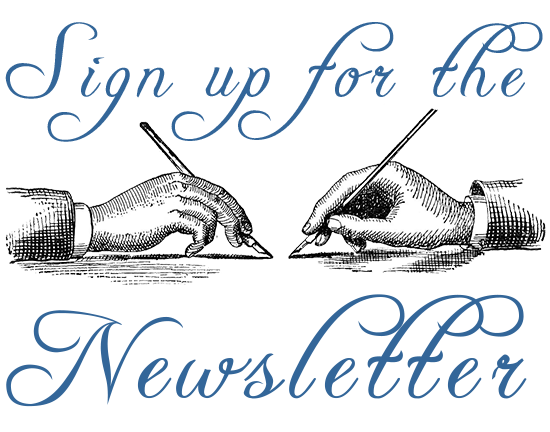


Susan Reynolds
July 3, 2019 at 12:55 pm (6 years ago)Terrific interview! Love Tom Pye’s designs and the series is wonderful.
Denice Bizot
July 3, 2019 at 11:45 am (6 years ago)so informative thx for posting-
Sharyn Marion
June 17, 2019 at 8:04 pm (6 years ago)Loved the article and Gentleman Jack!